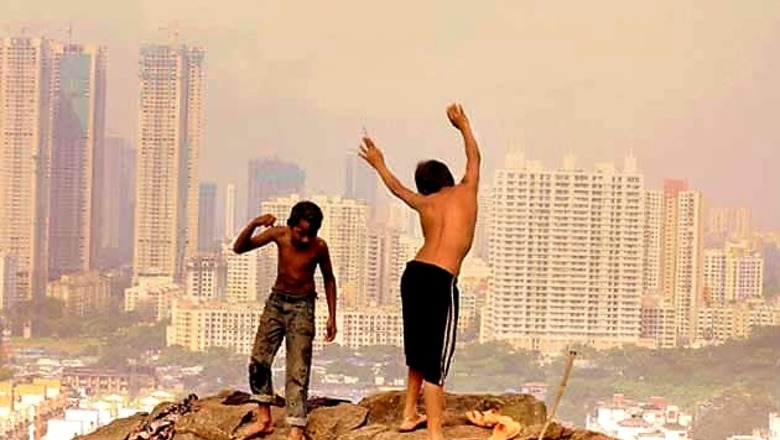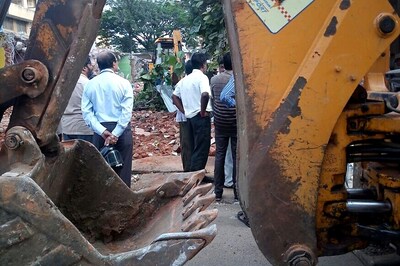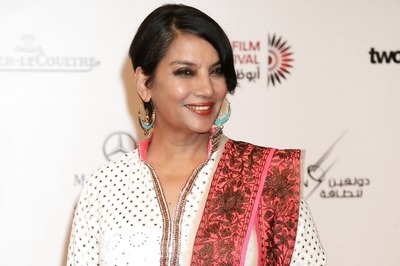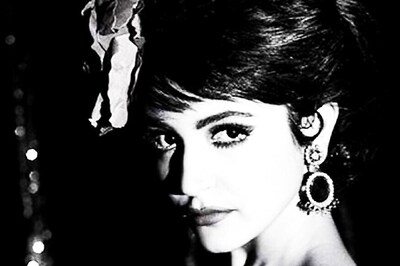
views
Cast: Rahul Bairagi, Salman Khan, Arbaaz Khan, Tejas Parvatkar, Dhanshree Jain
Director: Manjeet Singh
What 'Salaam Bombay' and many other films tried to communicate about the lives of slum dwellers in late 1980s is almost true in 2013 as well. It's not an attempt to establish a connection between Mira Nair and Manjeet Singh's films just because both of them have a similar premise. 'Salaam Bombay' and 'Mumbai Cha Raja' have common elements but they are woven in different narrative threads. Also, the latter is sweeter and more innocent than the earlier which had opened a new dark-grim world to the audiences who were otherwise not familiar with the inside of Mumbai slums.
In fact, on a second thought it seems 'Salaam Bombay' was probably meant to scare the audience about the alternate truths of life which may not be realised from the outset but are very much present in our everyday dealings. 'Mumbai Cha Raja' is more like a child's escapades and adventures in a world which we see every day but don't care much about.
Filmmakers have constantly made films on the relatively unseen underbelly of Mumbai's poor areas but most of them are rags to riches kind of stories which have a set pattern of narrative strategy and screenplay structure. 'Mumbai Cha Raja' is different on this account as it wasn't about someone who wants to escape from his fate or wishes to make it big in the world of films or business. The story is primarily about the thrills of childhood despite being born in a situation which might not have helped one in becoming another Mohammed Ali. You see, Jamal Mallik also had a childhood in 'Slumdog Millionaire'.
But, there the writer was tracing an underprivileged child's journey to stardom. It was quite evident from the beginning that Jamal is going to emerge as the hero at some stage in 'Slumdog Millionaire', which may not be the case in a slum boy's real life.
German filmmaker and author Werner Herzog says, "Civilization is like a thin layer of ice upon a deep ocean of chaos and darkness." I find this statement true to a good extent even if it is quoted without any context. Whenever you think about the deep ocean of chaos and darkness, you will be drawn towards the places where people are trying their best just to survive. It can be any place from New York's busy streets to Mumbai's slums. Manjeet Singh's space is interesting in this regard as he has tried to amalgamate two extremes. The slum where he shoots his film is situated adjacent to newly developed housing societies which are fetching money from Mumbai's nouveau riche.
So, there is a boy, in fact two boys, who are at the helm of affairs. However, in my opinion the film is not just about them as several other characters have been shown with same personal interest but I need to pick a particular point of view to begin with, so I am choosing these two boys called Rahul (Rahul Bairagi) and Salman (Salman Khan) as my perspective providers. These two street smart kids do all sorts of things to sustain the daily struggle but there is a huge difference in their respective lives. Salman is a happy-mischievous kid while Rahul is fast turning into a frustrated-suppressed child due to his drunkard-abusive father.
The father is a failure and that makes his hardworking wife's life pathetic. And, all this is happening at a time when Mumbai is celebrating Ganesh Utsav (The city's ultimate king).
In such a scenario, what do you expect a child to do? But, hold on, this is not our daily dose of 'masala' flicks, so children remain children, and they keep doing mindless, illogical but heart-warming acts. The camera explores a particular area which is probably not more than a few kilometres but it has strange locales. The oval shaped mise-en-scene, ok let's not get into technicalities, the bird eye view of the area amazes the viewer with its diversity. It's almost certain that you have not seen the backside of slums where water supply system becomes a kind of small pond. Similarly, the Ganesh Utsav gives the boys a chance to chase the girls, and mind you they are not older than 10 years.
Apart from domestic violence scenes, the narrative flows smoothly. It doesn't look to me that the film is about any particular people but it's about the innocence of childhood which remains intact even when the surrounding is hell bent on destroying it. The screenplay doesn't digress from the theme and the length of the film (75 minutes) complements it.
There are odd things in 'Mumbai Cha Raja' as far as the acting is concerned like why Rahul's mother (Dhanshree) is normal and smiling even in tough circumstances or why his father (Tejas) not coming to terms with the reality even after so many years. But, then there is one more thing. The director has just shown what happens in the slums, without passing any judgement or getting to any conclusion. It's like showing the interior and leaving it to the audiences to decide what they want to take out of it. Surely, it's not hard hitting but some visuals will remain in your sub-conscious. I want to mention two particular scenes which are subtle and penetrating. The first one is when three children bake stolen potatoes and the other when Rahul leaves Salman's small hut and goes to sleep in the backside of Ganesh Jee's statue.
Initially, I had reservations about the film's title, but I thought about it before writing this review, and now I realise that it's a satisfactory name because the drama is taking place during Ganesh Utsav and Lord Ganesha (Representative of the omnipresent almighty) is having an overview of the proceedings in everybody's life. Ironically, Lord Ganesha is said to be the god of wealth but slum people are completely deprived of it.
The first stage of eradicating a social evil is to identify it and 'Mumbai Cha Raja' is accomplishing the first task. It features the life inside slums in totality and now, it's up to someone else to carry the baton forward.
The editing and sound designing of the film are as per the requirements but cinematography is what makes it appealing. The lens stands at a distance from the subject and allows it to be fluid which in turn produces 'natural' visuals. The idea of not using external lights also pays off.
You may find the film politically incorrect or not as per the popular mindset, but you also need to understand that we tend to think in a particular way because we have been conditioned to think in that manner. We don't have the film legacy like Eastern Europe or Russia, and thus we are more dependent on the mainstream Hindi films to form an opinion. This fact can hamper the audiences in accepting the film as it is but 'Mumbai Cha Raja' is as much in search of a solution as any 'good' film can be.
Yes, it's not as assertive as some of the previous films made on the same theme but it's also an important part of the process. As I earlier said, scanning the situation is the first step towards the solution.
And, if you're in search of a feel good film 'Mumbai Cha Raja' may end your quest.####




















Comments
0 comment